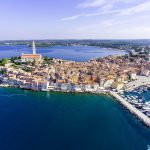
Just how far forward has the coronavirus pandemic pushed the dream of a digital Croatia? A mixed bag of results for the country that seemed allergic to the idea of a more digital society as the DESI index looks into the matter.
As Bernard Ivezic/Poslovni Dnevnik writes on the 15th of June, 2020, according to the DESI index, the most important measure of the digitalisation of society and the economy in the European Union (EU), Croatia remained in 20th place out of 28 members, as it did last year, and with 47.6 points, it remains below the EU average of 52.6.
The most digitally competitive countries on the list are Finland, Sweden and Denmark, followed by Romania, with Greece and Bulgaria at the very bottom.
Although so far the DESI index has been an important topic of discussion in Croatia, both by the Croatian Government and by its partners, primarily HUP, this year the European Commission (EC) went a step further and linked access to the Fund for Recovery and Resilience, which is the backbone of the European Union’s budget for the period between 2021 and 2027, and which comes with a hefty 560 billion euro figure attached to it.
Thierry Breton, the EC’s Commissioner for the Internal Market, emphasised that the data they released indicated that the industry was using digital technologies more than ever before.
”We need to ensure that this is the case for both small and medium-sized businesses and that the most advanced digital technologies are widely used in economies,” explained Breton. The report acknowledges that the country, in its quest to become a digital Croatia, has made above-average progress over the past five years, but that it remains below the EU average.
This year, it especially boasts progress in four categories: online shopping, public services, IT security, and the spread of 4G technology. In Croatia, 57 percent of citizens now shop online. The European Commission stated that in the past year, the number of online customers in the country has grown by 10 percentage points, and that this is the biggest jump in that indicator in the entire European Union.
The coronavirus pandemic certainly helped the digital Croatia mission along, with numerous administrative bodies which one required physical presence quickly (and surprisingly) finding online solutions.
On that note, the European Commission also praised Croatia for increasing the number of public services that can be performed entirely online. According to that indicator, it is stated that with a praiseworthy increase of 9.1 points, Croatia has made the greatest progress in the EU. Furthermore, only fifteen percent of Internet users in Croatia reported having had IT security problems in the past year.
According to that, Croatia, along with Lithuania, is the safest member of the EU. Finally, with the spread of 4G technology to 100 percent of the population, Croatia has made the most progress alongside Romania and Cyprus. However, the European Commission also identified some key reasons why the country continues to lag behind the EU’s average.
The report stated that Croatia is at the back of the EU in terms of the development of key digital public services, such as e-ID cards, the application of digital certificates, digital access to public registers and the possibility of obtaining official documents via email.
Likewise, the Commission has recognised that Croatia doesn’t seem to place a great deal of emphasis on mobile access to public services, despite the fact that we live in a time when most of its citizens have smartphones. It also recognised that Croatia is at the very bottom of the EU when it comes to the availability of public services for the economy.
According to that, Croatia is third from the bottom of the EU. Croatia is also at the bottom of the EU in terms of the share of the population that has never used the Internet, as many as 18 percent of Croatian residents have never done so. It is also one of the three EU countries with the lowest share of users who surf at 100 Mbps, with only 6.2 percent of them doing so, while the EU average stands at a much higher 25.9 percent.
The Commission also criticised the delay in two national broadband projects co-financed by the EU, the construction of an intercity optical network and local optical networks.
While the dream of a digital Croatia became much more real, with some warped sort of thanks to the pandemic, it seems that for some, the desire for no more queues, tax stamps and endless paperwork just isn’t strong enough.
For more on digital Croatia, follow our lifestyle section.








